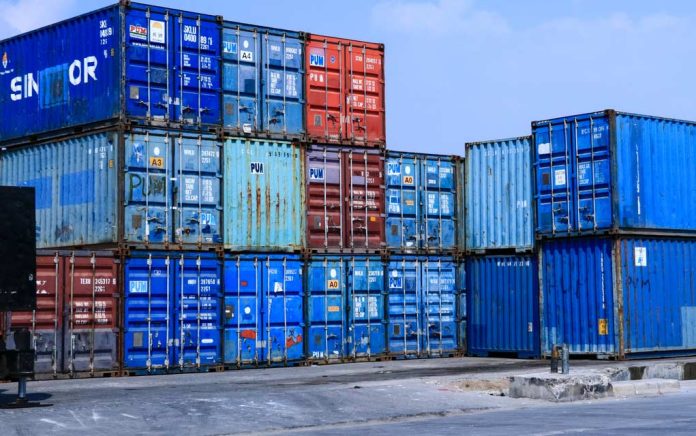(SurvivalDaily.com) – Shipping containers have become somewhat of a trend. People have started to build tiny houses out of shipping containers, and even full-size houses by connecting multiple containers together. Many have elected to bury their containers as well, providing themselves with an underground bunker of sorts. Before you go out and purchase one for yourself, there are a few things you may want to know first.
Burying Your Container
Shipping containers can hold a lot of weight, and they can even be stacked. This does not mean the walls, or ceiling for that matter, are structurally capable of holding extreme amounts of soil. Dirt can become very heavy very quickly, not to mention additional weight from rain. Though it may not seem like it, water is actually very heavy, and adding that weight to the soil without proper structural support could cause the walls to cave.
While the container is technically waterproof, how long until sitting in moist soil causes holes to form? The metal used to make these containers is typically Corten Steel, which is a good material as long as it stays scratch and dents free. If there are scratches or dents, they tend to corrupt the outer coating, leaving the metal exposed for future corrosion.
Unless you want to spend more money fortifying the container and burying it, than you did to buy it, it’s ideal to keep it above ground. Otherwise, it could be costly to prepare the container to sit in the soil for an extended period of time.
Alternate Uses
Now it’s not to say there are no good uses for these containers, because there are. They can be used as housing if that’s really what your heart desires. They can also easily be made into livestock sheds, and chicken coops. Since they can be placed just about anywhere, they can make for a great bug out destination shelter or a permanent campground (if you own the land of course). You can even use them for their intended purpose, which is simply storage.
There is use for them underground as well, as they can be made into a cellar or storm shelter. This is slightly different from an underground bunker, where you’re presumably going to attempt to live in it long-term. A storm shelter is for temporary protection, and doesn’t need to be buried as deep as a bunker would be. However, if you intend for it to last, proper precautions must still be taken to ensure it doesn’t collapse under the weight of dirt.
Expenses
Anyone can buy a shipping container anywhere from $1,000-$2,500 at the low end, depending on the condition. Other things, such as size and weight affect the price as well. There are certainly cheaper alternatives, especially if you want to put it underground. We advise you have experts come and examine every aspect of your build. This isn’t cheap, but if done right, it’s worth it in the long run.
Adding decorations and furniture makes that bill go up exponentially. Proper ventilation is a must, but not without cost, including resealing the container once it’s ventilated. Then there is lighting and wiring, best installed by a professional electrician, but far from cheap. Plumbing is more than likely going to be a necessity as well, especially if you’re looking to live in the container long-term.
Some varieties come insulated (such as those designed for refrigeration), however, these tend to be much more expensive than their normal counterparts. Having to apply insulation to a standard container not only increases the price, but also decreases the space inside which is already rather limited.
There are a variety of things that can be done with shipping containers, with some being much safer than others. If you’re looking for an underground bunker though, it may be best to build it yourself, or use a culvert pipe.
Even from a tactical view, shipping containers may sound like a good idea, but come with their own weaknesses. Contrary to popular opinion, they aren’t bulletproof. Also, if you want a bunker, you’re running the risk of trapping yourself if you’re ever attacked. One way in one way out.
Did you find this article interesting? Reply to your email and let us know, we would love to hear from you!
~Copyright 2021, SurvivalDaily.com

















